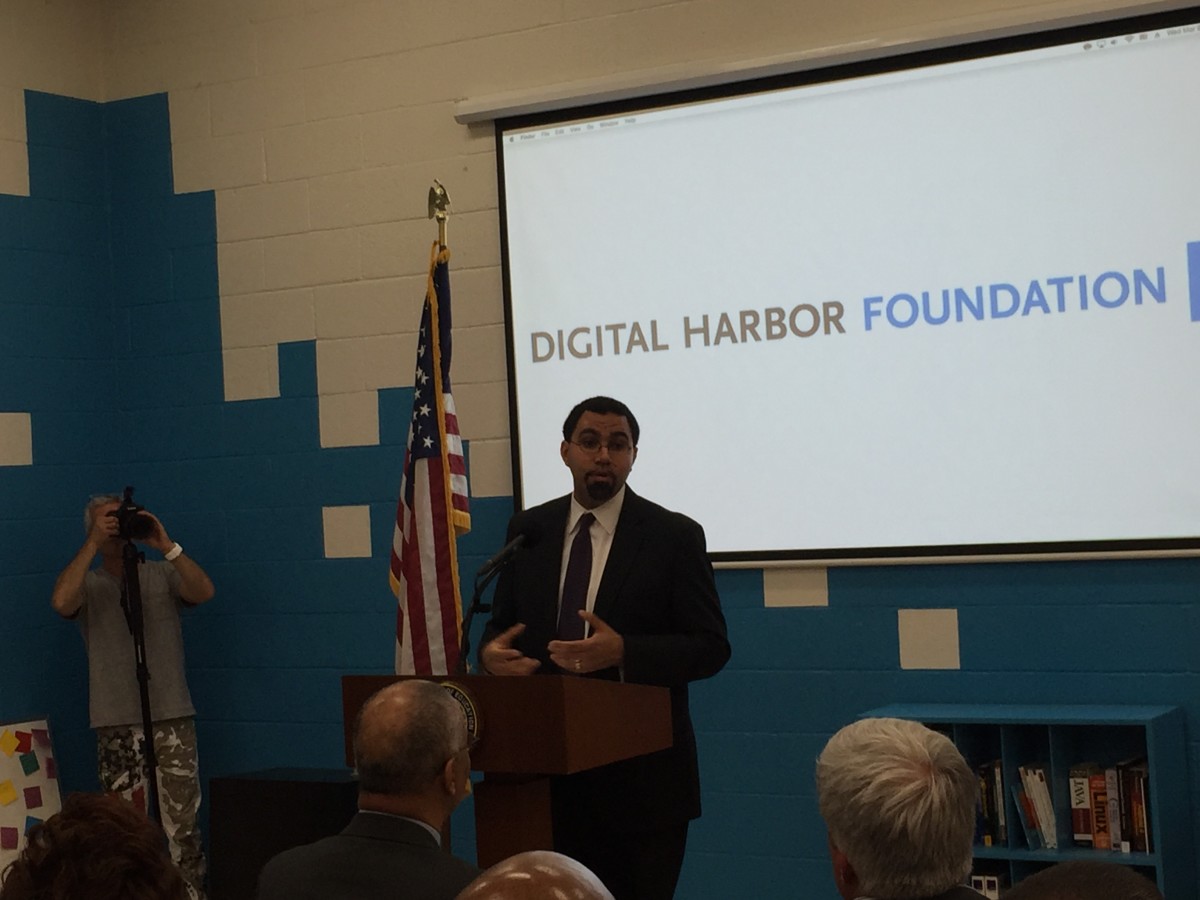As part of her high school education, Jasmine Walden is working in a nursing home. These days, she said she finds the opportunity she got with a certified nursing assistant program at Mergenthaler Vocational-Technical High School “gratifying.” But it wasn’t always that way.
“I never saw myself as helping older people,” she said at the Digital Harbor Foundation’s tech center. “Where I come from you never see children working in a position where I’m in.”
Walden was among a group of students and educators assembled at the Federal Hill tech center on Wednesday to talk to U.S. Secretary of Education John B. King, Jr., and other Obama administration officials about Career and Technical Education (CTE).

In front of a crowd that included Lieutenant Gov. Boyd Rutherford, federal and Congressional staffers and Baltimore educators, King called on Congress to reauthorize a law called the Perkins Act, which provides more than $1 billion per year for CTE nationally. He also said the Department of Education is sponsoring a makeover challenge for high schools who can turn classrooms into spaces for making or innovation. The Department is offering $200,000 to be split among 10 schools nationwide.
King and other speakers like Baltimore City Schools CEO Gregory Thornton talked about how makerspaces with 3D printers and coding training are different than the shop class that used to headline CTE. In the current age of White House policymaking, the Obama administration says it is looking to bolster efforts that provide tech training in poor areas to help students out of poverty, and help the tech industry fill open jobs.
“High-quality career and technical opportunities will save lives,” King said. “They will create pathways to opportunity for students who didn’t even see that possibility for themselves.”
The visit is another sign of the Digital Harbor Foundation’s connection to policymakers in Washington, D.C. Former Digital Harbor Foundation Executive Director Andrew Coy (who was not in attendance Wednesday) recently began a job as a Senior Policy Advisor in the White House Office of Science and Technology Policy. About a year ago, a Department of Education contingent including Assistant Secretary for Career, Technical and Adult Education Johan Uvin (who was in attendance Wednesday) visited for a similar roundtable event. Whereas last year’s event was part of a listening tour, this year the Department was making specific policy announcements.
The officials aren’t only paying attention to Digital Harbor Foundation. Previous Education Secretary Arne Duncan visited Liberty Elementary last year. And King also shouted out P-Tech, an IBM-developed program that started in Brooklyn and is set to come to four Baltimore high schools. When he was the top educator in New York, King said he pushed P-Tech to expand statewide.

But with the roundtable and a tour, there was still some time for the officials to hear about what’s happening in Baltimore.
There were the projects. Digital Harbor Foundation student Sierra Seabrease, whose first big project at Digital Harbor Foundation was the Spotify jukebox made out of an old piano, said she is now leading the effort to revamp the nonprofit’s website.
Angie Watts, who leads the Mergenthaler nursing assistant program that Walden is participating in, said she sees the need for nurses in the community. The program helps set up a role for kids from the community to work in those jobs. And no matter what they do after high school, the students are introduced to what it’s like to have a job, as well as the academic training they would need to go on to college.
“They are the bomb dot com when they leave because they have two things that they can use in their community,” she said of the students.
US Education Secretary visits Baltimore in push for more CTE







